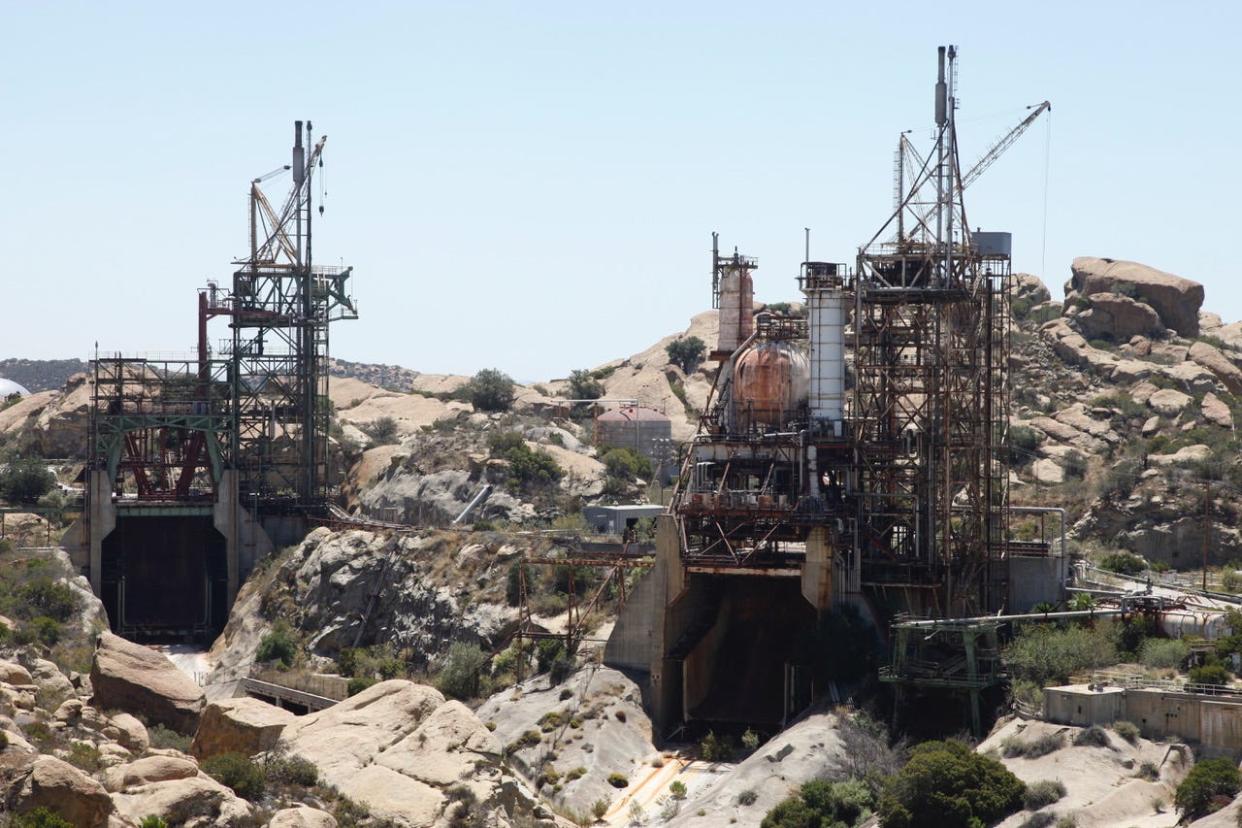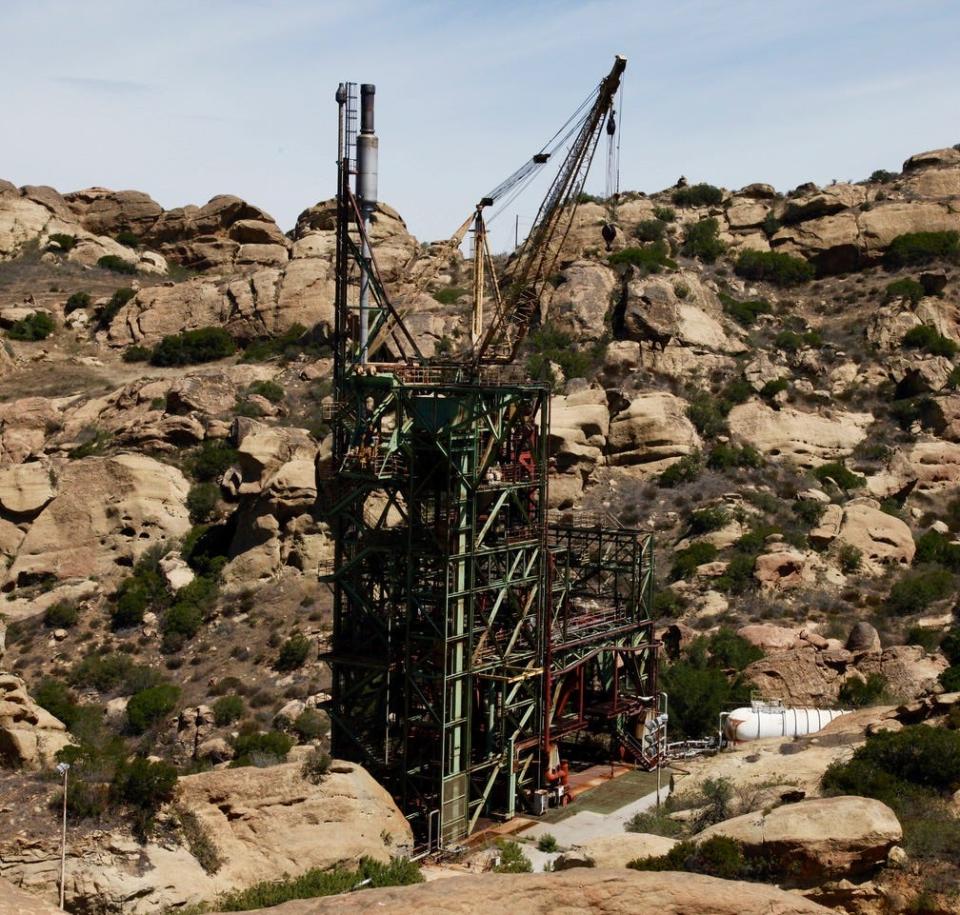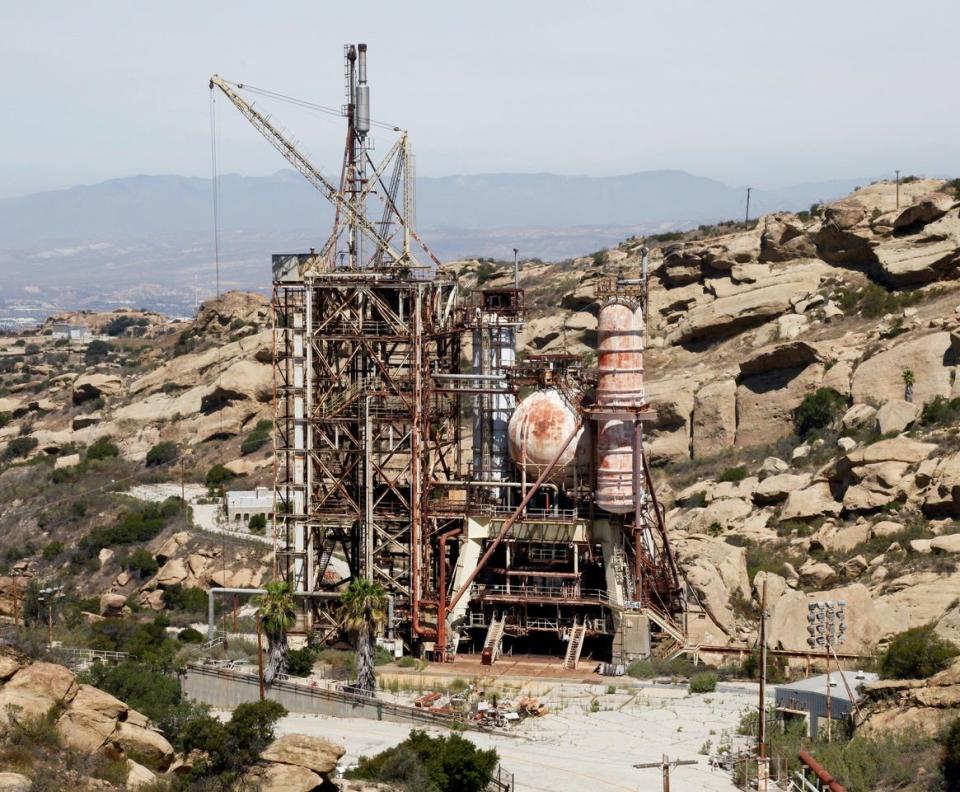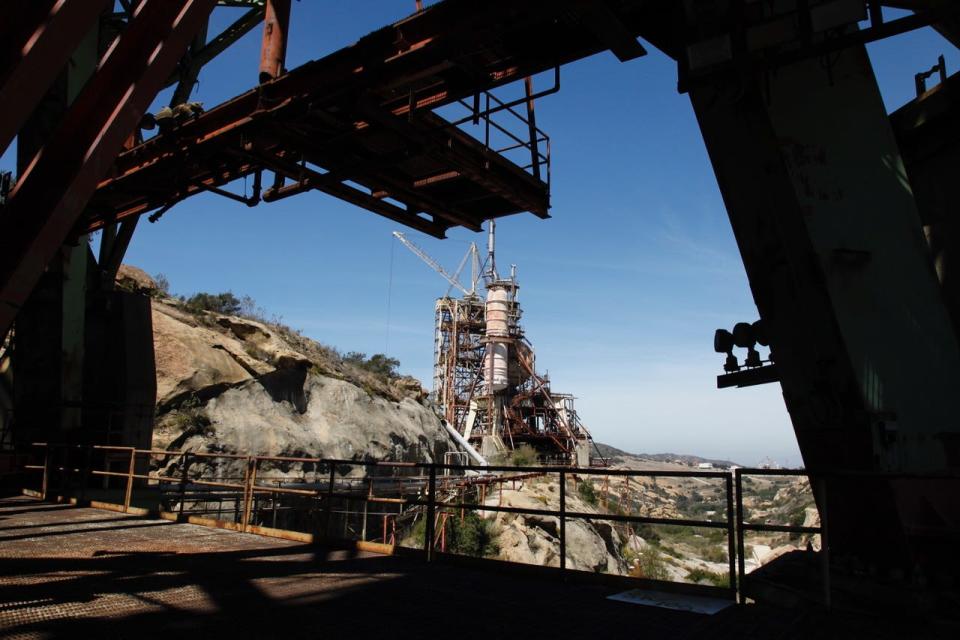Activists sound alarm to stop demolition of 'historic' NASA rocket stands

A local grassroots organization is taking a last stand against the current demolition of NASA rocket test stands at the Santa Susana Field Laboratory.
The group Save Open Space, which advocates for the preservation of public lands from development, has been fighting for years to prevent the demolition of the so-called Coca test stands, which stand over 100 feet tall and were used in the mid-20th century to test the Saturn V rockets used during the Apollo moon missions.
Agoura Hills resident Mary Wiesbrock, president and founder of Save Open Space, believes the Coca stands are worth the cost of preservation. Demolition of the stands began earlier this month.
"These are very historical test stands," Wiesbrock said. "We want them saved for future generations."
Wiesbrock touted Save Open Space’s successful track record from previous campaigns, such as the preservation of 5,000 acres at Ahmanson Ranch by the Santa Monica Mountains National Recreation Area.
The test stand site complicates preservation efforts. All are located at the Santa Susana Field Laboratory, an approximately 2,850-acre space south of Simi Valley with sites owned by Boeing and NASA. The western part of the field lab is the former Rocketdyne site where a partial nuclear reactor meltdown took place in 1959.
Cleanup of the site has undergone long delays, with Boeing and NASA both responsible for decontaminating the area.
Part of NASA’s process has involved demolishing the rocket test stands that remain.
Three sets of stands were built at the field lab: Alfa, Bravo and Coca. All three sets have been archived by the National Park Service, which launched a website featuring photographs and 3D models as part of a virtual tour. The website can be found at nps.gov/hdp/exhibits/ssfl/intro/index.html.

The Bravo stands were demolished in 2022. The Alfa stands were selected for preservation, a decision which Wiesbrock believes is incorrect.
"It is planned after the cleanup that the Santa Susana Field Lab will be open space parkland," Wiesbrock said. "The Coca test stands would be the most impressive, the most important and the most significant NASA legacy to save there."
NASA to save Alfa stands
In a statement, NASA spokeswoman Janet Sudnik said NASA favored preserving the smaller Alfa test stands for a variety of reasons.
“Because the Alfa Test Stands were operational most recently, the stands are in relatively good condition compared to Coca," Sudnik said. The Alfa stands are also in their original formation, she added, and haven't been modified to the extent the Coca stands have.
Demolition of the Coca stands is scheduled to take place in three phases over three years, according to NASA.
The first phase, which is underway, involves demolition of Coca test stand IV. The work is expected to be completed by the end of the year.
The second phase, starting in 2024, will take down Coca test stands II and III. The final phase, scheduled for 2025, includes removal of the Coca control house and remaining concrete and asphalt. Coca Test Stand I was replaced in 1962 for construction of the other Coca stands.

Bell Canyon resident Tim Brehm, vice president of Save Open Space, has been involved with efforts to preserve the Coca stands since 2014. A former photojournalist, Brehm shot a special issue of Pace magazine in 1969 dedicated to the moon landing and has a special affinity for the event.
He recalled how the decision to demolish the Coca test stands was made nearly a decade ago.
"They had formed a committee called the Programmatic Agreement Committee," Brehm said, to determine what would be demolished and what would be saved as far as NASA property at the field lab site.
Brehm said despite objections he and fellow advocates made at the time, NASA proceeded with the demolition decision. In the intervening years, Save Open Space has been in contact with NASA personnel to present various counterarguments to demolition.
Wiesbrock pointed out a 2019 Inspector General report that listed the cost of demolishing the Coca stands as $6 million more expensive than preserving them.
Sudnik, the NASA spokeswoman, noted the report didn't account for the price of ongoing maintenance, which would cost more than the initial demolition figure. Degradation of the stands would also escalate demolition costs if NASA waited until after site cleanup was done, with the report estimating demolition ballooning to $27 million by 2045.
Although demolition is already being underway for one of the three Coca test stands, Wiesbrock and Brehm remain hopeful they can save at least part of the Coca test area. More information about local efforts to protest the demolition can be found on the organization's website at saveopenspace.com.
Jeremy Childs is the East County Reporter for the Ventura County Star, covering the communities of Thousand Oaks, Moorpark and Simi Valley. He occasionally covers courts, public safety and breaking news. He can be reached at 805-437-0208, jeremy.childs@vcstar.com, and on Twitter @Jeremy_Childs.

This article originally appeared on Ventura County Star: Save Open Space sounds alarm to stop demolition of NASA rocket stands

